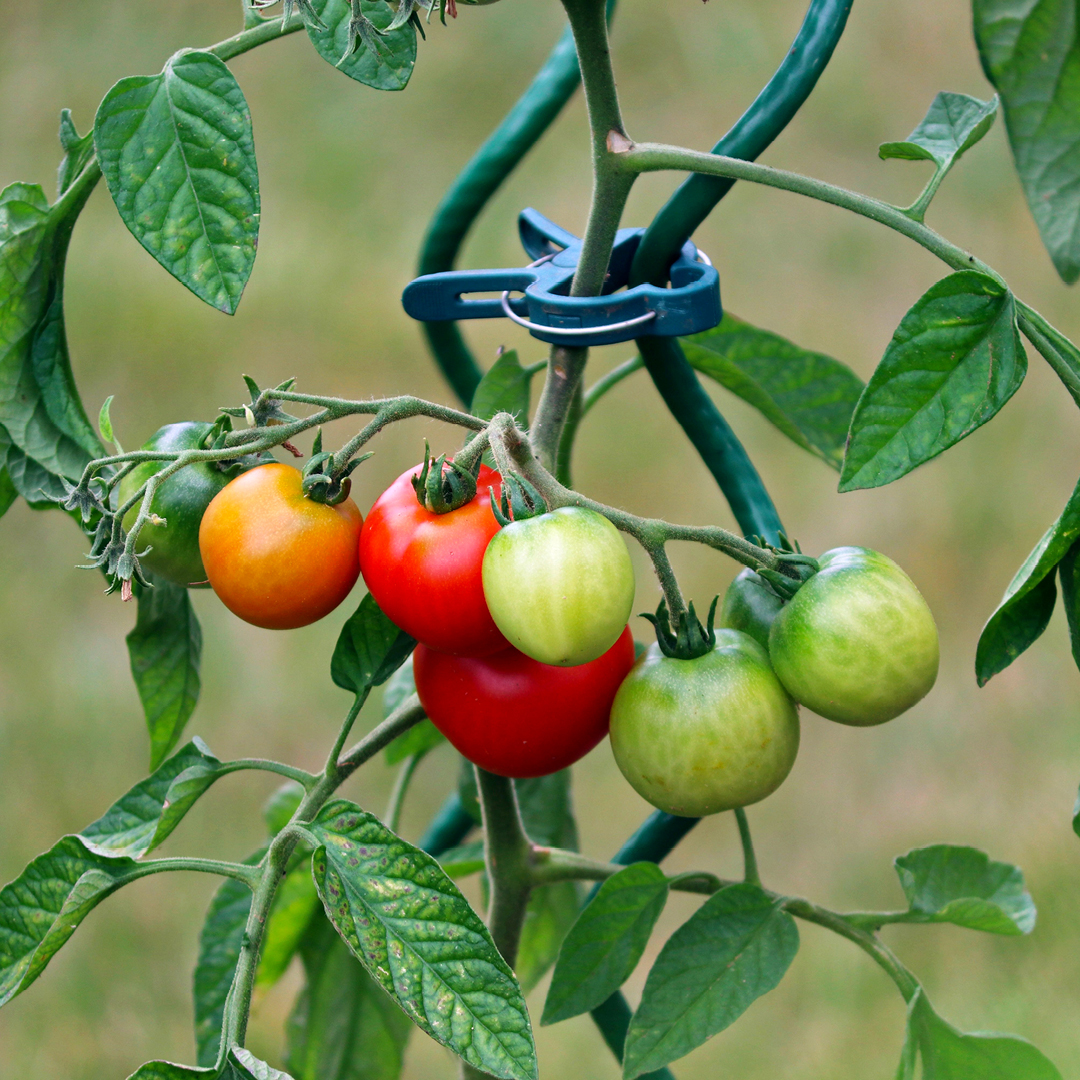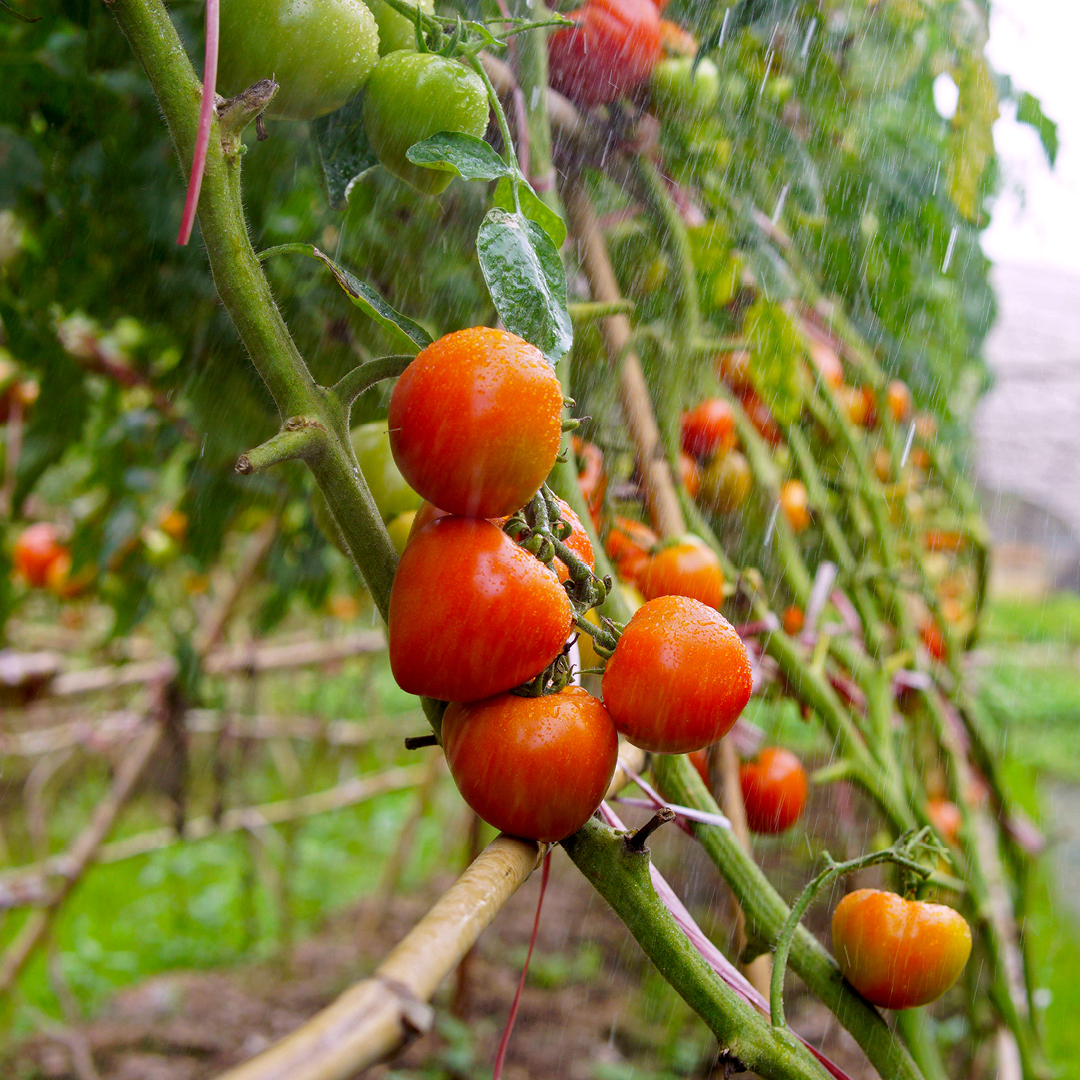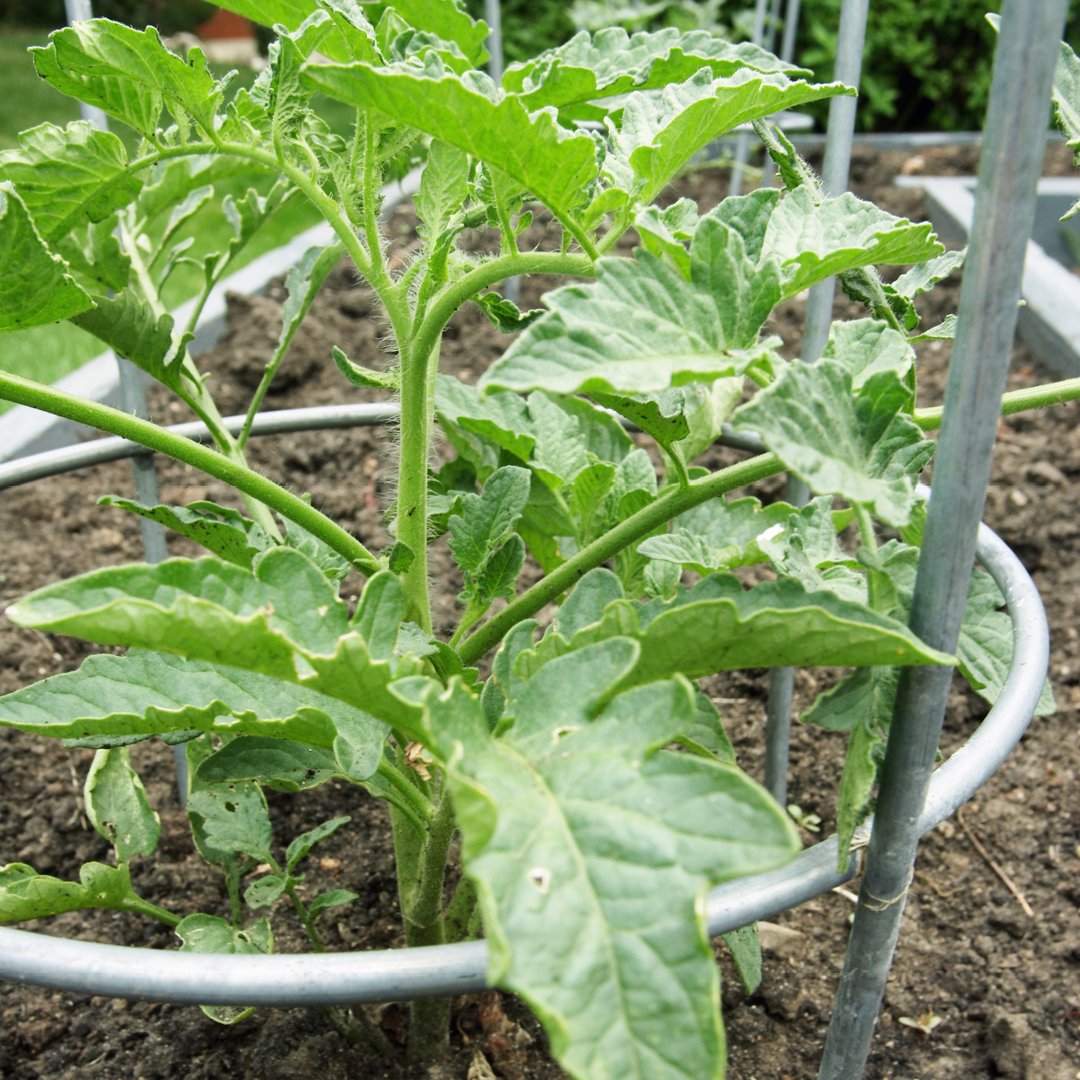Understanding the Basics
Before diving into the various methods, it’s important to understand why the supporting and training of tomato plants are necessary:
- Preventing Disease: Keeping foliage off the ground reduces the risk of soil-borne diseases.
- Improving Air Circulation: Proper spacing and support improve airflow, reducing the likelihood of fungal infections.
- Maximizing Sunlight Exposure: Trained plants have better exposure to sunlight, enhancing photosynthesis and fruit ripening.
- Easier Harvesting: Supported plants are more accessible, making it easier to pick ripe tomatoes without damaging the plant.
- Increased Yield: Training and trellising can lead to higher fruit production by encouraging healthy growth.
Methods of Supporting Tomato Plants
There are a number of support methods employed to keep Tomato plants from laying on the ground. Offering the pros and cons of each will make it easier to select the method that best suits your particular situation.
- Staking
Pros: Simple, cost-effective, great for small spaces.
Cons: Requires regular tying and pruning, less support for heavy fruiting varieties.
Materials Needed: Wooden or metal stakes, garden twine, or ties.For the single-stake method, drive a sturdy stake (6-8 feet tall) into the ground about 12 inches deep and 2-3 inches away from the tomato plant. As the plant grows, tie the main stem to the stake with garden twine, stretchy fabric, or soft ties every 10-12 inches. Remove suckers (the small shoots that grow in the crotch between the stem and a branch) to focus energy on the main stem. - Caging
Pros: Less maintenance than staking, supports multiple branches and heavy fruit.
Cons: Bulkier, can be expensive if purchasing many cages, not ideal for indeterminate varieties that grow very tall.
Materials Needed: Tomato cages (purchased ready-made or homemade from concrete reinforcing wire), garden stakes (for additional support if needed).Place a tomato cage over the young plant, ensuring it’s centered, and the plant can grow upwards through the cage. Push the cage firmly into the soil. For larger cages, additional stakes may be needed for extra stability. As the plant grows, direct the plant branches through the cage openings. - Trellising
Pros: Great for rows of tomatoes, maximizes space, supports heavy crops well.
Cons: Requires setup and regular maintenance, may need additional pruning.
Materials Needed: Stakes or posts, wire, twine, or netting.For vertical Trellising, install two sturdy posts at either end of your tomato row. Stretch wire or heavy twine between the posts at several levels (every 12-18 inches).For the weaving method, weave individual tomato plants between the wires as they grow, securing with additional ties if necessary.
- Florida Weave
Pros: Cost-effective, supports multiple plants, great for determinate varieties.
Cons: Needs regular weaving and tightening, less effective for very tall plants.
Materials Needed: Stakes, twine.Place stakes at both ends of a row of tomatoes and every few plants in between. Starting at the bottom, weave twine in a figure-eight pattern around each plant, securing it to the stakes. Add new rows of twine every 12 inches as the plants grow. - Spiral Stakes
Pros: No need for tying, supports plant naturally.
Cons: Best for smaller tomato varieties, less support for heavy fruit loads.
Materials Needed: Spiral stakes.Spiral stakes provide a helical structure for the tomato plant to grow around. Insert the spiral stake into the ground near the base of the plant. As the plant grows, guide the main stem around the spiral. - Arbors and Arches
Pros: Visually appealing, maximizes vertical space.
Cons: Requires strong support structure, can be labor-intensive.
Materials Needed: Arbor or tunnel structure, ties.For a more decorative approach, consider growing tomatoes on arbors or arches. Install a sturdy arbor or tunnel in your garden. Guide the tomato plants up and over the structure, securing with ties as needed.
Training Tomato Plants
Training is about guiding the plant’s growth to maximize air circulation, sunlight exposure, and fruit production. Here are some common training techniques:
- Pruning
Pros: Improves air circulation, reduces disease risk, focuses plant energy on fruit production.
Cons: Time-consuming, needs to be done regularly, risk of over-pruning.
Materials Needed: Scissors or pruning shears.Pruning entails removing particular parts of the plant to improve its overall health and productivity. Identify suckers, look for small shoots growing from the axil (where the leaf stem meets the main stem). Pinch or cut suckers off with clean scissors to encourage a strong, single-stem growth habit. For larger suckers, use pruning shears to avoid damaging the plant.
- String Training
Pros: Saves space, excellent for indeterminate varieties, easy to manage growth direction.
Cons: Requires sturdy overhead support, regular training needed.
Materials Needed: Overhead support (such as a strong wire or pole), wooden frame (to support the wire or pole), garden twine or string.Run a strong wire or pole horizontally above your tomato plants, securing it firmly to the wooden frame. Attach a piece of twine to the base of the plant and tie it to the overhead wire. As the plant grows, wrap the main stem around the twine. Regularly prune side shoots and suckers to maintain a single stem. String training doubles are a method of support.
Supporting and training tomato plants are crucial steps to ensure a bountiful harvest. Each method has its advantages and drawbacks, so choose the one that best fits your garden space, tomato variety, and personal gardening style. Regular maintenance, such as pruning and tying, is essential to keep your plants healthy and productive. With the right support system, your tomato plants will thrive, providing you with delicious, home-grown tomatoes all season long.



